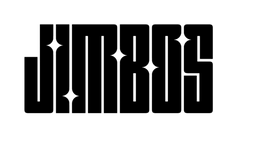Clay Towel vs Clay Bar – Which One Should You Use?
Decontaminating your paint is a key step before polishing or applying protection. But should you use a traditional clay bar or a modern clay towel?
This guide compares the two, explains when to use each, and shares tips for safer, faster claying without scratching your paint.
What Is Paint Claying?
Claying removes bonded contaminants that washing can’t. These include brake dust, rail dust, industrial fallout, and tree sap—stuff that sticks to your clear coat and makes it rough to the touch.
You’ll know you need to clay if your paint feels gritty after washing or if you’re about to polish or ceramic coat the vehicle.
Clay Bar – The Classic Method
The traditional clay bar is a kneadable resin putty that you flatten and glide across lubricated paint to pick up contamination.
Pros:
- ✅ Affordable and widely available
- ✅ Great control in tight areas
Cons:
- ❌ Drops on the ground = throw it away
- ❌ Slower and more tiring to use
- ❌ Can mar paint if used without enough lubrication
Clay Towel – The Modern Upgrade
A clay towel uses a rubberized polymer surface bonded to a microfiber backing. You lubricate the surface, glide it across the panel, and it removes contamination fast.
Pros:
- ✅ Much faster than a clay bar
- ✅ Washable and reusable
- ✅ Safe for coated and uncoated cars when used correctly
Cons:
- ❌ Slight learning curve—can grab if not used properly
- ❌ More expensive up front (but lasts longer)
When to Use Each
✅ Use a Clay Towel If:
- You’re claying more than one car
- You want to save time
- You’ve already applied a ceramic spray or coating and want a smoother process
✅ Use a Clay Bar If:
- You’re working on a single vehicle
- You’re claying small, tight areas or delicate trim
- You want a cheap, no-frills option
Pro Tip: Always Use Lubrication
No matter which method you use, lubrication is critical. Use a dedicated clay lube or a high-lubricity soap like The Super Soaper in a foam cannon or bucket to reduce friction and prevent marring.
What to Do After Claying
Claying doesn’t protect your paint—it just preps it. After claying, you should:
- Polish (optional) to refine finish: Picture Perfect Polish
- Seal or coat the paint: Tough As Shell Ceramic Spray
This locks in a smooth surface and prevents contamination from re-bonding quickly.
Want Faster, Safer Decontamination?
Use a clay towel with The Super Soaper as clay lube—then seal it in with Tough As Shell for long-lasting protection.



